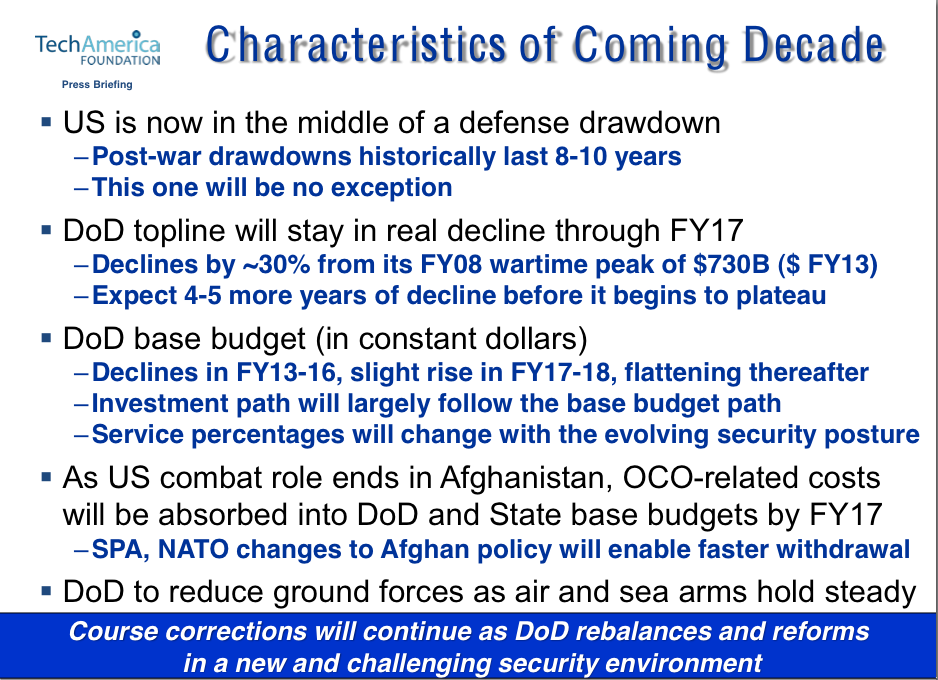Navy, Air Force To Win Budget Wars Over Army
Posted on

As troops pull out of Afghanistan and Congress looks for fat to trim from the federal budget, future Pentagon spending will dip and then flatline, with money going to the Air Force and Navy while ground forces see reductions in troops and equipment, a new report predicts.
It’s not the kind of news that the Army or its supporters want to hear on the opening day of the annual AUSA conference but one hears little hopeful chatter among defense contractors or Army officers about the ground forces next few years.
The Pentagon is already in the middle of a drawdown, which will probably last well into the next decade, according to the TechAmerica Foundation‘s study. Most post-war military drawdowns typically last eight to 10 years and this one will be no exception, TechAmerica analyst Trey Hodgkins said.
The budget will keep dropping until 2017, shrinking 30 percent from its wartime peak of $730 billion in 2008. Money will decline sharply from 2013 through 2016, bump up a bit in 2017-2018 and flatten out after that, Hodgkins said. This money is all discretionary spending — the part of the budget that the president and Congress battle over every year.
TechAmerica’s forecast calls for military spending to drop from $614 billion in 2012 to $506 billion by 2017 and stay there for the forseeable future. Breaking the numbers down finds that through 2013 to 2017, operations and maintenance funding will drop from $270 billion to $216; military personnel spending (payroll and other related services) from $149 billion to $138 billion; research, development, training and education from $70 billion to $55 billion; and procurement from $110 billion to $89 billion. These costs also reflect the end of combat operations in Afghanistan, Hodgkins said.
Among the services, this means that funding for the Air Force and Navy will be effectively flatlined for the forseeable future while ground forces will see budget cuts, Hodgkins said.
If the Budget Control Act, better known as sequestration, takes placethe Pentagon would see cuts of $52.3 billion, mostly from the discretionary budget. Office of Management and Budget estimates put these cuts at 9.4 to 8.2 percent to non-exempt defense programs, he added.
Military personnel and spending levels are exempt from any sequestration cuts. That means money will migrate from other parts of the budget. Hodgson estimates that approximately $15 billion will be trimmed from procurement and $7.5 billion from the Pentagon’s research and development, training and education funds. Sequestration would hit the DOD at the program, project and activity level, with areas such as readiness, training, civilian personnel, military families, services and support and investment all taking big hits.
Charts courtesy of TechAmerica Foundation.



Charts courtesy of TechAmerica Foundation.
Subscribe to our newsletter
Promotions, new products and sales. Directly to your inbox.
